AI-Powered Ad Testing: How to Run 50 Variants Without Losing Your Mind
- Tom Linthorst

- Jun 10
- 10 min read

Testing ads used to be simple. You’d write two headlines, flip a coin, and hope one worked better than the other. But it’s 2025, and now you’re expected to run 50 versions—testing multiple variants—across five platforms, all with different specs, formats, and audiences. Oh, and you still need results by Friday.
That’s not A/B testing anymore. That’s ad chaos.
Modern performance marketing has become a balancing act of creative overload, data tracking, and calendar juggling. You’re not just launching campaigns. You’re managing a small army of variables, and it’s exhausting.
This blog is your shortcut out of that mess.
We’ll show you how to use three AI tools that take care of the creative, the performance analysis, and your time management. With AdCreative ai, Triple Whale, and Motion, you can run dozens of ad variants at lightning speed without breaking a sweat or losing your mind. These platforms feature an intuitive dashboard that simplifies the process for users of all skill levels.
Let’s get into it.
Key Takeaways
Learn how to run high-volume ad testing without creative burnout.
Discover a repeatable workflow powered by AI that speeds up your ad cycle.
Use AdCreative ai to instantly generate dozens of ad variants.
Monitor performance at the variant level with Triple Whale.
Improve creative performance through data-driven insights.
Stay on top of it all with Motion’s automated scheduling system.
Ideal for media buyers, growth marketers, and performance teams who want speed without losing control.
Walk away with a process you can apply to Facebook, Instagram, Google Ads, and more.
Achieve better performance and higher ROI with an AI-powered workflow.
Why Traditional Ad Testing Breaks at Scale
Testing five ad variations? Easy. Testing 50? Welcome to chaos.
Manual testing at that scale is slow, inconsistent, and full of bottlenecks. Much of the process involves repetitive tasks that drain time and resources. You’re juggling copywriters, designers, approval chains, and spreadsheets that haven’t been touched since 2020. And let’s be honest, nobody has time to track the performance of every single ad manually.
The moment you try to scale, things start slipping. Running multiple tests manually leads to inefficiency and missed insights. You duplicate work, burn time on tweaks that never get launched, and end up guessing which ad actually worked.
Scaling ad tests isn’t just a creative challenge. It’s an operational one. Which is exactly why AI is stepping in to help.
How AdCreative ai Handles Creative Chaos for You
If you’re still building every ad variation by hand, you’re wasting hours. AdCreative ai changes the game by automating the entire creative process. It streamlines content creation by generating a wide range of ad creative options, allowing you to quickly produce and optimize eye-catching advertisements. It takes your product, your audience, and your goal, then spits out dozens of high-quality visual and copy combinations featuring a variety of creative concepts in minutes.
You pick a headline. Drop in a few bullet points. Select your brand style—AdCreative ai ensures all outputs adhere to your brand guidelines. And just like that, you’ve got a portfolio of ads ready to test across platforms like Facebook, Instagram, and Google.
The best part? You get data-backed performance scores for each variation before they ever go live. That means you’re not just throwing spaghetti at the wall. You’re launching with a strategy.
For fast-moving teams, this is a massive time saver. And for solo marketers, it’s like having a designer and copywriter on standby 24/7, covering all aspects of ad creative from visuals to messaging.
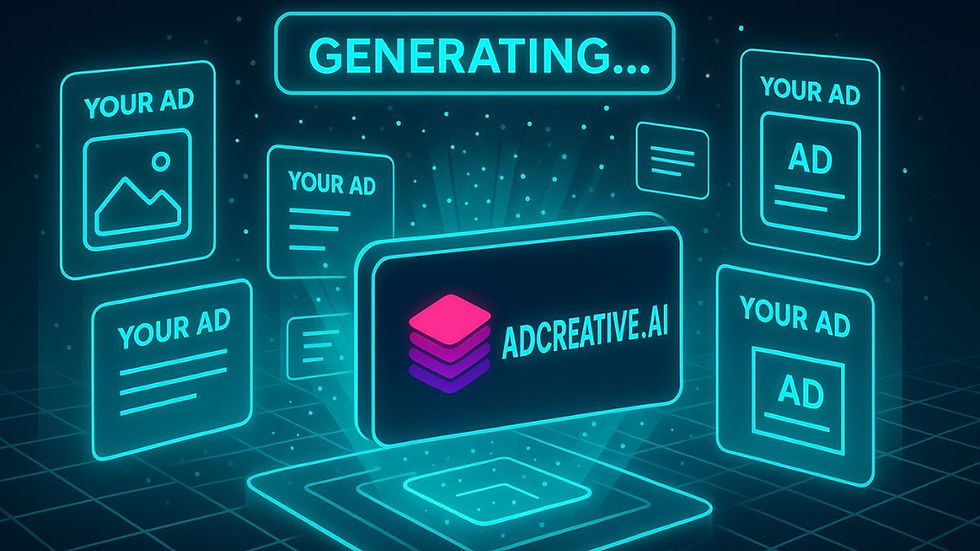
How Triple Whale Tracks Ad Performance Without the Spreadsheet Headaches
Testing 50 ad variants is only half the battle. The real chaos kicks in when you try to figure out what actually worked. Triple Whale solves this by giving you one clean, centralized place to track all your ad performance across platforms, allowing you to analyze data from all your campaigns in one place.
Instead of jumping between Meta dashboards, Google Ads, and half-baked spreadsheets, Triple Whale pulls it all together. You get real-time insights on which headlines are converting, what visuals are underperforming, and where your budget is burning, while leveraging historical data to identify trends and optimize future campaigns.
You can even break performance down by variant, so you know exactly what tweak made the difference. Predictive analytics help forecast which variants are likely to succeed. No guesswork. No “I think this worked.” Just clear data that helps you double down on what moves the needle.
Triple Whale makes testing smarter, not just bigger. And that’s the difference between a campaign that scales and one that just spins its wheels.
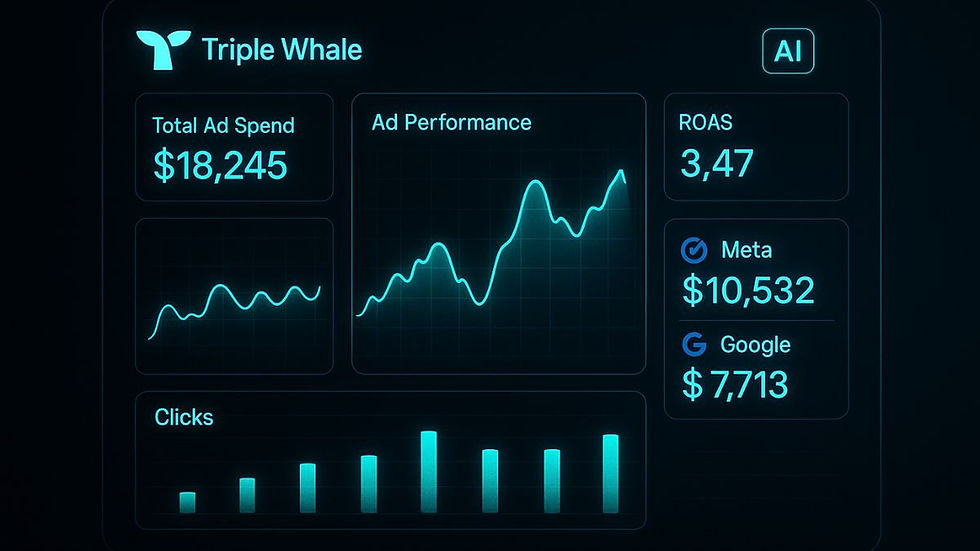
How Motion Schedules Your Ad Testing Workflow Without Overload
You’ve got your ad variants from AdCreative ai. You’ve got performance data streaming in from Triple Whale. Now you need time to actually review, adjust, and optimize, without spending your entire week staring at dashboards.
That’s where Motion comes in.
Motion takes your to-do list and matches it with your calendar. It finds real, available time blocks where you can focus on reviewing performance data, brainstorming new angles, or prepping the next round of tests. If a meeting gets added or your day changes, Motion reshuffles automatically.
The result? You stay on top of your ad testing without feeling like you’re drowning in tabs and reminders. No more late-night performance reviews. No more half-finished test plans. Just structured, focused time that helps you scale without stress. Motion enables continuous optimization by ensuring regular, structured review and adjustment of your ad campaigns.
When AI powers your creative, your analysis, and your schedule, you’re not just testing ads. You’re building a performance machine that runs like clockwork.
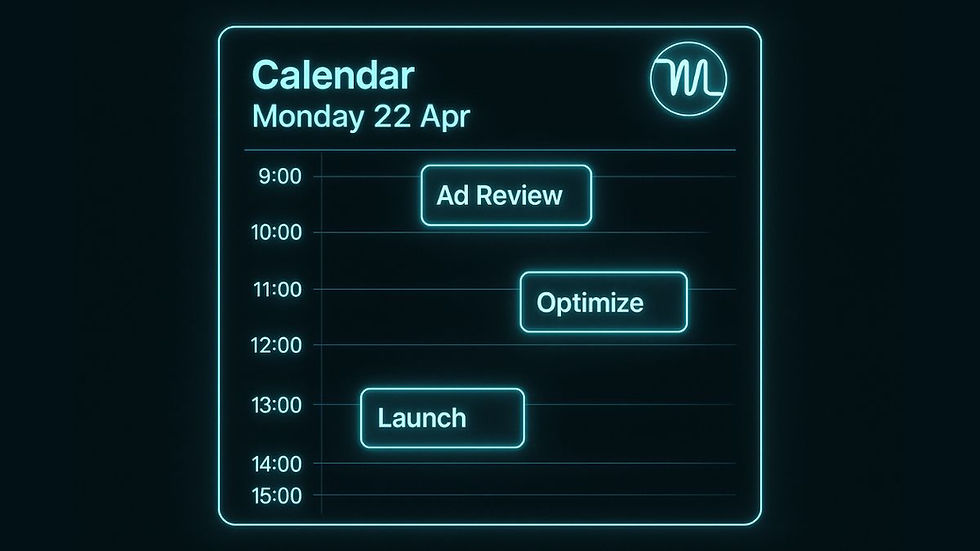
The Real Cost of Not Automating Ad Testing
Manual ad testing might feel safe. Familiar. Even noble, like you’re crafting each asset with artisanal care. But let’s be honest. That handcrafted approach is costing you more than you think.
Every hour you spend tweaking text in Canva or updating a spreadsheet is an hour you’re not optimizing what actually works. It’s not just time you’re burning; it’s opportunity.
According to McKinsey, companies that invest in AI are experiencing revenue increases of 3 to 15 percent and sales ROI boosts of 10 to 20 percent (McKinsey on AI marketing performance). Automation not only drives these results but also leads to better ROI for companies that leverage AI before media spend.
That’s not a small lift. That’s budget back in your pocket, reach you didn’t lose, and insights you didn’t miss because you were stuck building yet another banner from scratch.
When ad testing becomes a burden, you run fewer tests. When you run fewer tests, you miss what resonates. And when you miss what resonates, your performance plateaus while competitors sprint past you with smarter systems. Those who automate and leverage AI gain significant advantages, such as faster experimentation, personalized messaging, and scalable creative testing.
Bottom line? The real cost of not automating isn’t the hours. It’s the edge you’re handing over to someone else—and the market trends you’re missing out on that AI-powered competitors are capitalizing on.
When to Scale: Signs You’re Ready for AI Testing Tools
If you’re running the same three ads on repeat and your campaign updates feel more like chores than strategy, it might be time. Scaling ad testing isn’t just about budget. It’s about bandwidth and ambition.
Here are a few signs you’re ready to bring in AI:
You’re spending more time managing campaigns than creating them
Your team is constantly playing catch-up with approvals and asset delivery
You want to test multiple messages but don’t have the time or tools to execute
You’re seeing diminishing returns from your current ads but don’t know what to try next
Your marketing team is ready to shift from manual execution to strategic oversight by integrating AI, allowing marketing teams to focus on creative direction and campaign strategy
AI tools like AdCreative ai, Triple Whale, and Motion aren’t built just for enterprise teams. They’re made for anyone who wants more control without more complexity.
You don’t need a 10-person creative squad to scale anymore. Integrating AI empowers even small marketing teams to scale effectively. You just need the right system.
Building a Weekly Ad Testing Routine That Actually Sticks
Most marketers dream of consistency, but let’s be real, testing often happens when there’s time left. Which is never. That’s why setting a weekly ad testing routine is a game-changer. It turns chaos into cadence and can be applied across multiple channels for maximum impact, with creative testing at the heart of the process.
Here’s how to structure your week using the AI stack to support a more effective marketing strategy:
Monday: Generate Creatives
Start your week with AdCreativen ai. AdCreative ai uses advanced ai algorithms to produce ai generated content for your campaigns, ensuring each creative is optimized for performance. Load in your product details, audience insights, and let it churn out dozens of fresh variants. Aim for 10 to 15 per campaign, enough to test without overloading the system.
Tuesday: Launch Your Tests
Get the ads live. Use your campaign manager of choice, whether that’s Facebook Ads Manager, Google Ads or another platform. Focus on clean structures. Separate your variants clearly so performance data doesn’t get muddy.
You can set up traditional b tests to compare two versions, or use advanced multivariate testing to evaluate multiple elements and variants at the same time for deeper insights.
Wednesday: Let It Breathe
No touching. Let the algorithms gather enough data. Machine learning models analyze performance by considering not just initial results, but also other variables such as audience targeting, placement, and user interactions that may impact outcomes. Avoid the urge to pause poor performers too soon. Give it at least 24 to 48 hours unless you’re seeing a major burn.
Thursday: Performance Review
Now it’s Triple Whale time. Dive into your dashboards and review what’s working. Look at CTR, CPA, conversion value and frequency. Analyze click through rates and segment results by different customer segments for deeper insights. Group insights by angle, offer or visual type.
Friday: Plan and Adjust
Motion helps you slot review time into your actual calendar. Book 30 minutes to analyze results and prep for next week’s batch. Archive what flopped, clone what worked, and tee up your next creative sprint. Identify your winning ads and use them as a foundation for continuous optimization, ensuring each new campaign builds on proven success.
Creating structure around testing means you spend less time reacting and more time improving. It’s not just about doing more. It’s about doing it better.
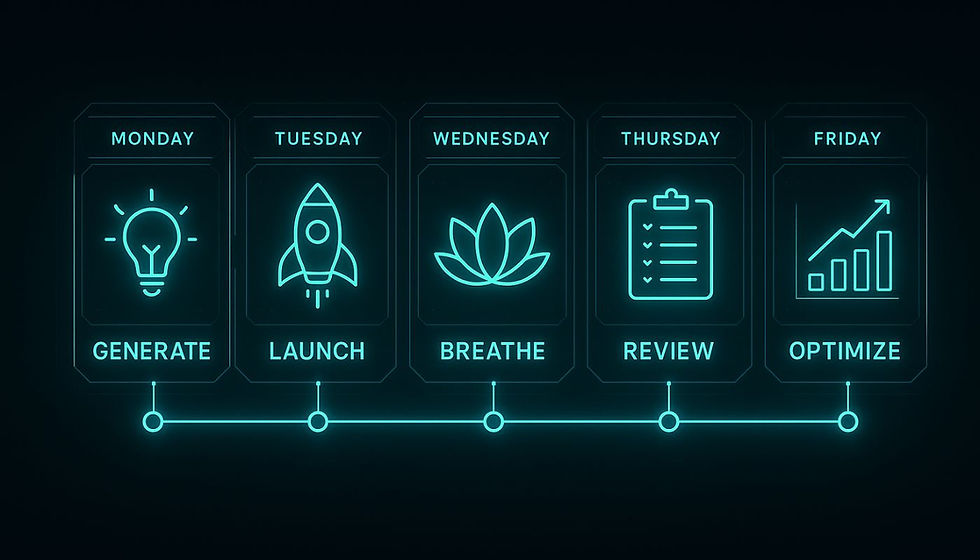
Beyond Facebook: Expanding Your Ad Testing Across Platforms
If your entire testing strategy begins and ends with Facebook, you’re leaving a lot of insights on the table. The principles behind AI-powered testing don’t just apply to one platform; they scale across your entire ad ecosystem.
Once you’ve built a workflow using AdCreative ai, Triple Whale, and Motion, you can adapt that same system for:
Instagram – With visual-first formats, your creative iterations from AdCreative ai plug in seamlessly.
YouTube – Use static visuals as jumping-off points for video scripts or motion graphic ads.
LinkedIn – Test B2B angles, corporate messaging, or lead gen forms with professional-grade visuals.
TikTok – Use winning concepts from static formats to inspire short-form video content.
Google Display Network – Repurpose high-converting variants into responsive display ads.
Landing Pages & Web Pages – Optimize landing pages and web pages by generating and testing AI-powered creative variants to improve user engagement and conversion rates.
This workflow can also be applied to social media marketing, including creating on-brand social media posts and managing email campaigns with AI-generated content for better engagement and efficiency.
Ad platforms have different rules, audiences, and formats. But your system? It stays the same. That’s the beauty of having an AI-powered testing stack. It gives you the flexibility to experiment everywhere without rebuilding your entire process every time. E-commerce brands, in particular, can benefit from scaling ad testing across multiple platforms to maximize reach and conversion.
According to Pixis, AI tools can help marketers overcome challenges in cross-platform performance marketing by automating campaign optimization and ensuring brand consistency across various channels (Pixis on AI in cross-platform marketing).
How to Know If Your Ad Testing Stack Is Actually Working
So you’ve plugged in AI tools, launched 50 ad variants, and synced everything with your calendar. Great. But how do you know it’s actually working?
Look for these signs:
Faster creative turnaround – what used to take a week now takes hours
Increased testing volume – you’re running more experiments without more stress
Improved performance clarity – you know which ads work and why, without guessing
Consistent scheduling – your review and optimization times don’t get pushed around by surprise meetings
More confident decisions – you act based on data, not gut feelings or vague trends
Enhanced customer experience and engagement – your campaigns deliver more relevant, personalized interactions that improve overall satisfaction
Better targeting of audiences and identification of potential customers – data-driven insights help you reach your target audiences more effectively and engage new potential customers
If you’re seeing these improvements, congratulations. Your ad testing is no longer reactive. It’s systematic.
As marketing continues to lean into automation and AI, the teams who build and refine these systems will be the ones staying ahead. Not just working harder, but working smarter.
Summary: From Chaos to Clarity (With a Lot Less Stress)
Ad testing at scale doesn’t have to feel like juggling flaming swords while blindfolded. With the right AI stack, you can generate dozens of creative variants, monitor performance in real time, and manage your schedule without drowning in to-do lists.
Let’s recap the winning combo:
AdCreative ai gives you a creative engine that never sleeps
Triple Whale turns your performance data into actionable insights
Motion keeps your workflow organized and your brain uncluttered
This trio doesn’t just save time. It gives you back control, structure, and a clear view of what actually works. Whether you’re managing five campaigns or fifty, this system scales with you.
And most importantly, it helps you test with purpose, not just for the sake of volume. Adopting ai powered marketing provides a significant advantage in today’s competitive landscape.
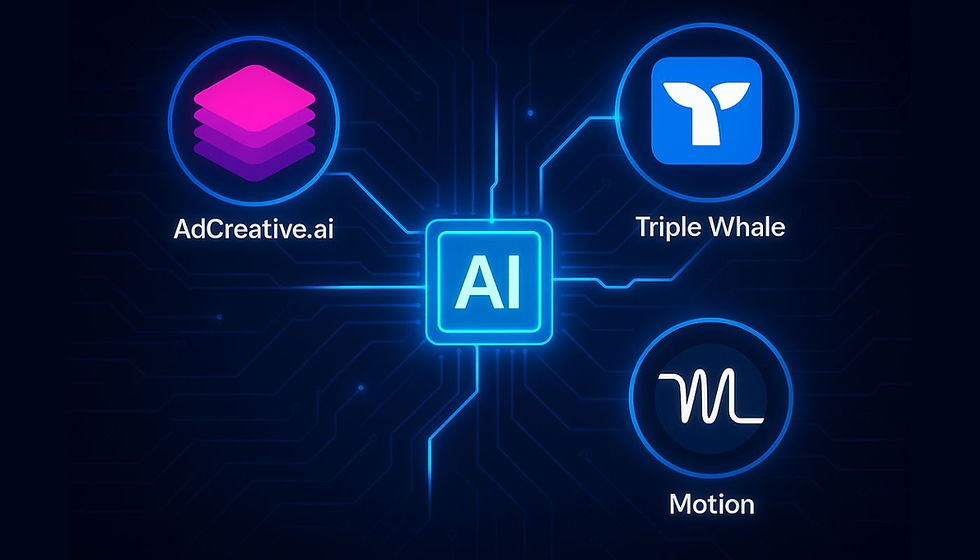
Frequently Asked Questions
What is AI-powered ad testing?
AI-powered ad testing uses artificial intelligence tools to generate, manage, and evaluate multiple ad variations automatically. Instead of building each ad manually, you feed the AI inputs like headlines, audiences, and goals. The AI then creates dozens of variants, tracks performance, and suggests improvements — saving time and boosting results.
How can I test multiple ad creatives efficiently?
Use an AI stack that includes creative generation, performance tracking, and scheduling. Tools like AdCreative ai help you build creatives in bulk. Triple Whale shows which ones are performing. Motion helps you find time to actually review and optimize. This setup gives you volume without the chaos.
What are the best AI tools for A/B testing ads?
Some of the best AI tools for ad testing include:
AdCreative ai for fast and scalable creative generation
Triple Whale for performance analytics and attribution
Motion for task scheduling and calendar syncing
Together, they streamline the entire testing cycle from creation to analysis.
Can I use AI to scale Facebook ad campaigns in 2025?
Yes. In fact, using AI is one of the only ways to scale effectively in 2025. Platforms like Facebook reward constant testing and iteration. With tools like AdCreative ai and Triple Whale, you can stay ahead by producing new variants quickly and making data-backed decisions.
How do I track ad performance across multiple platforms?
Use a centralized analytics platform like Triple Whale. It pulls in data from Facebook, Google Ads, TikTok, and more. That way, you can compare ad variants side by side, understand which channels are driving ROI, and eliminate guesswork from your reporting.
.png)

Comments